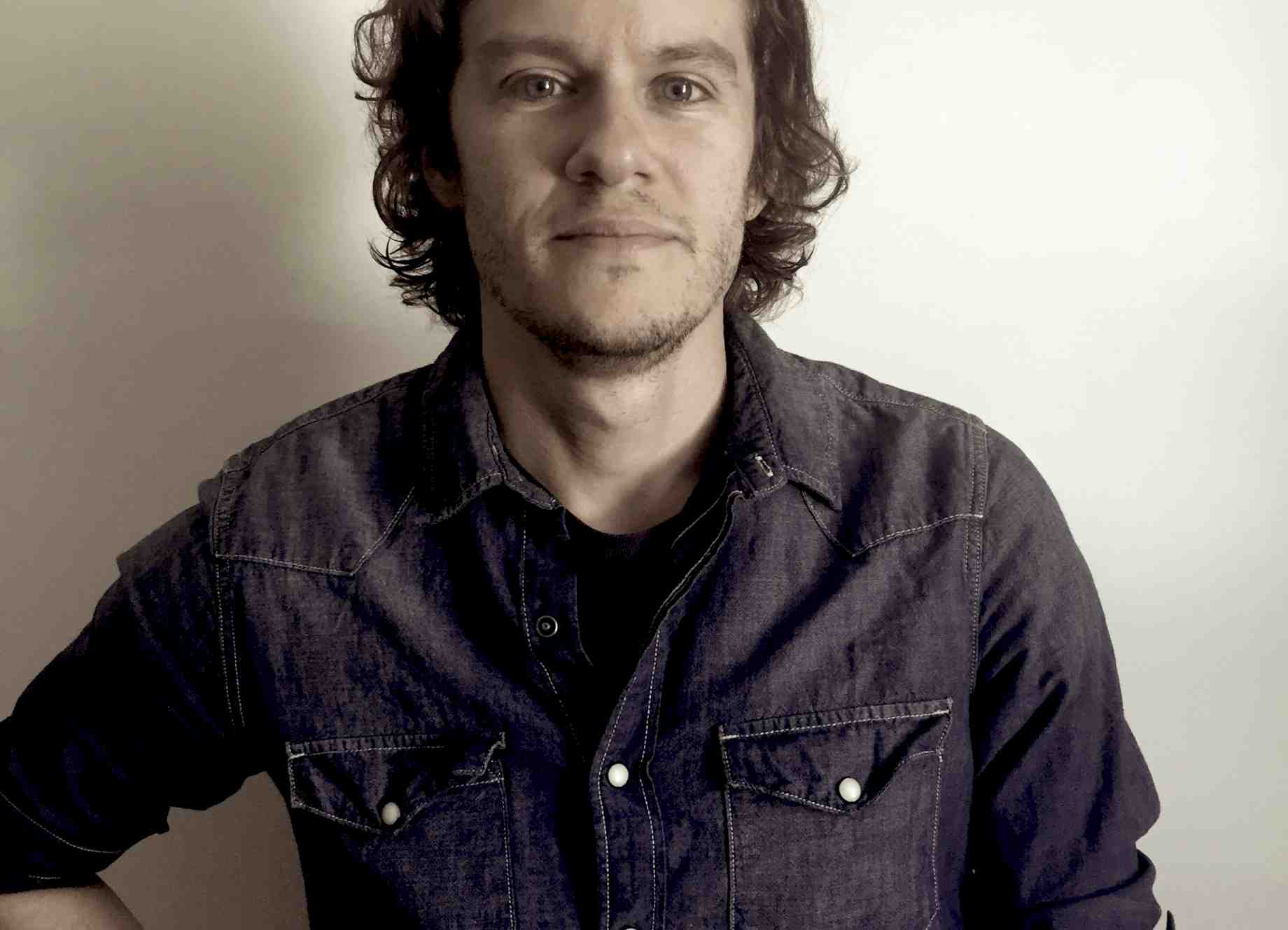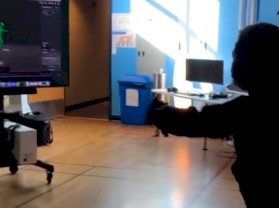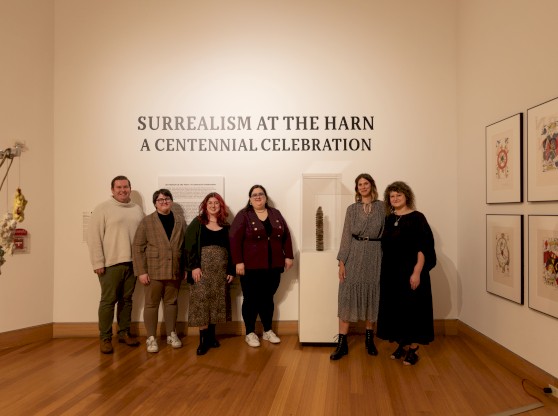Although primarily a painter, Jason Mitcham's work has expanded into the realm of video, creating stop-motion animations from paintings. His videos explore the development of our society's landscapes and notions of temporality, suburbia and modern ruins. His video for The Avett Brothers, Head Full of Doubt/Road Full of Promise was premiered on NPR's website, and featured at the 2011 Los Angeles Film Festival. Recent solo exhibitions include the North Carolina Museum of Art, Elon University and the University of Wisconsin at Green Bay. He is a recipient of the Elizabeth Greenshields Foundation Grant (2005), has been an artist in residence at Yaddo (2012), and was a 2012 NYFA Fellow in Interdisciplinary Work. Jason received a Master of Fine Arts in the Painting and Drawing Department at the School of Art + Art History at the University of Florida in 2005. He lives and works in New York City. His work is included in the School of Art + Art History’s Alumni Invitational Exhibition: Image, Object and Idea, currently on display in University Gallery on UF's campus.
Lisa Iglesias is an assistant professor in the Painting and Drawing area at the School of Art + Art History. She received an MFA from the University of Florida in 2006. Here, Jason discusses his "moving paintings" and how working for his father's firm as a land surveyor inspired his work.
Lisa: What have you been up to since receiving your MFA in Painting and Drawing from the School of Art + Art History at the University of Florida in 2005?
Jason: I moved to New York City immediately after I graduated from UF and have been here ever since. My focus all along has been on maintaining a sustainable studio practice, and I recently began teaching painting and drawing again. One of the biggest shifts in my practice happened in late 2009 when I started making animations with my paintings. This has lead to collaborations with filmmakers, musicians and writers, and has pushed my work into realms I originally had no intention of pursuing. It all happened pretty organically.
Lisa: As a graduate student in the School of Art + Art History, you focused on painting, creating imagery full of accumulation and decay. Can you discuss how your studio process began to expand to include work in video?
Jason: You know, I’ve been thinking about, or maybe re-thinking, those paintings from graduate school a lot lately. I think they relate pretty directly to what I’m investigating these days in terms of sites of ruin,and states of liminality within these spaces. The videos came right on the tail end of a series of paintings that I did for a solo show in 2008. The paintings were layered images of aerial views of landscapes over which competing images of future development were painted. I was hoping to show the vast changes that happened in sites that I was exploring, but in the end felt unfulfilled that I had done that.
In late 2009, I flew down to Greensboro where I had grown up. It had been maybe eight months since I had visited last. My parents picked me up from the airport and drove me home on a new beltline that had just been built, and as we passed through a landscape that I had known inside and out, I found myself completely lost, unable to position where we were. I had explored this place thoroughly, navigating it both as an individual and as a land surveyor for my father’s firm. I had even surveyed some of the sites for the placement of the beltline years ago! I decided then that I had to figure out a way to actually make this happen in the paintings, and when I got back to the studio in New York I immediately made the first animation, This Land is Your Land.
Lisa: Do you think of your videos as moving paintings?
Jason: I do. For a while I called them “films,” until I learned enough to realize that they were shot 100% digitally, thus they were videos. I think this had to do with me wanting them to be considered analogue, because the meat of what happened was just simply painting. There is really no editing other than slightly adjusting the speed at which one frame transitions to the next. The primary language that they function in is painting, and so I think “moving paintings” is a great way to describe them.
Lisa: What has most influenced your work?
Jason: I spend a good deal of time visiting places that are of interest to me and my work, such as Detroit, Levittown, New York, Passaic, New Jersey, abandoned architectural sites, etc. I also think working for my father’s firm as a land surveyor really influenced my work. My short list of crucial influences would be Gordon Matta-Clark, Robert Smithson (both his work and his writings) and William Kentridge. Some of the artists that I’ve been looking at or thinking about heavily at over the past few years include Cyprien Gaillard, Jennifer Allora & Guillermo Calzadilla and Ellen Harvey. I’m a huge fan of those early Disney films, and I think there’s a lot to be gleaned from them about visually and sonically scoring. Stanley Kubrick is a master of this also. Some of my top individual scenes of sound and visual interaction would include the Pruitt Igoe scene in Koyaanisqatsi, Night on Bald Mountain and the Stravinsky score in Fantasia and Kentridge’s The History of the Main Complaint.
Lisa: What are your favorite spots in Gainesville?
Jason: Paynes Prairie! I don’t know if that’s technically Gainesville, but I spent a lot of time painting, writing and thinking there. In fact, when I painted the opening scene from Head Full of Doubt/Road Full of Promise I was imagining Paynes Prairie. Other favorites included The Top, Chopstix (for both sushi and alligator watching), the Hippodrome, the Thomas Center, the Harn Museum and the UFArchitecture & Fine Arts Library. I think [the Fine Arts Library] is an incredible resource, and I loved spending time in that space.
Lisa: Can you share some advice with young art students?
Jason: Looking back, a few things I would recommend would be don’t take on too many student loans, take risks in the studio while you are in a supportive environment and embrace failure. I think it’s really important to be proactive, especially in preparation for getting out into an art world that will most definitely not come to you. Something that really shaped my thoughts on this happened the summer before I started graduate school. I did a two-person show with Scott Avett, who was a fellow painting student in college. He had just started a gallery space in small-town Concord, North Carolina. He put in a ton of work to open the space, built frames for both his and my work, put out ads in local papers and put together an extensive mailing list. We spent an afternoon hand addressing hundreds of invites to mail, and then he said we should drive into Charlotte that evening to pass out flyers during the gallery crawl. He literally approached every single person on the streets. Hundreds of people turned out for the opening in this small town and, as I found out that night, Scott would not be in attendance. He was playing a show somewhere for probably less than 30 people. I realized he had been two steps ahead of me the whole way. This do-it-yourself, proactive approach really stuck with me, and I think it’s a good tool to have when it comes to navigating things these days.
Lisa: What's next?
Jason: I’m getting ready for an exhibition at Elon University titled Future Histories which will include a more installation-based approach. Over the past year I have been focused on finding ways to incorporate more of my physical work within exhibitions. For a while people only wanted to show the videos, but for me the work is so tied to the physical objects that make the videos. I’ve started to experiment overlapping painting and video with sculpture and installation, and I find these fringe areas very fertile to work in. I think the edges of painting are the most interesting parts.
For more information on Jason Mitcham, visit his website www.JasonMitcham.com.
sā+äh Alumni Invitational Exhibition: Image, Object and Idea
Sept. 8-Oct. 8 2015
Planned, organized and curated by Painting Professor Richard Heipp, the exhibition includes the work of 26 artists representing each of the school’s studio areas of concentration and features a wide variety of media, styles and approaches including, video, sound, light, photography, sculpture, ceramics, painting, drawing, printmaking, graphic design, installations and collage, with works that address traditional analogue processes as well as digital imaging and 3D printing. Alumni who have received BFAs and MFAs from UF ranging from the 1960s to 2013 are featured, and 13 of the alumni included in the exhibition attended the opening reception. This venture represents an inaugural alumni exhibition that will take place every five years in University Gallery. To learn more, click here.
An earlier form of this interview originally published on UF alum Gianelle Gelpi’s blog, Honey and Beehives.




